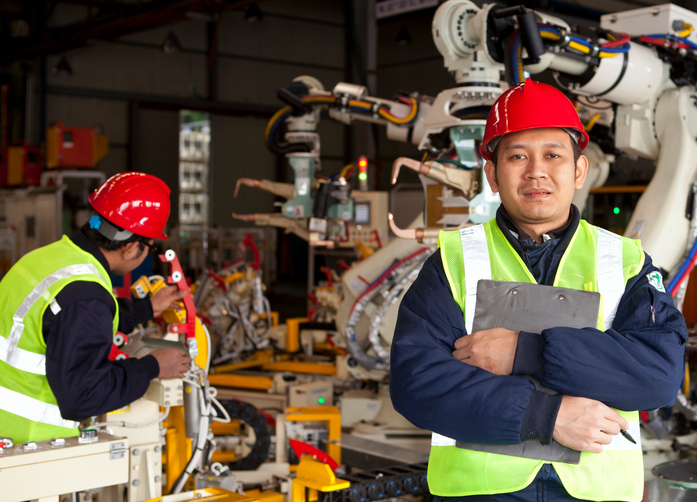How to Promote Robotic Welding Safety in Your Operations

Robotic welding is a dangerous process. As welding robots become more and more common in factories of all sizes, the need for safety has never been greater. Manufacturing professionals have a responsibility to their employees and their bottom lines to introduce and follow the strictest robotic welding safety protocols.
Promoting robotic welding safety goes beyond implementing physical safeguards. While these are certainly necessary, they’re only one part of a safe robotic welding environment.
Understanding the True Costs of Robotic Welding Safety
It may seem like a huge burden implementing safeguarding equipment, training staff, maintaining welding robots and enforcing safety protocols, but the cost of not doing these things is far greater.
A workplace accident may result in Occupational Health and Safety Administration (OSHA) citations or fines, lost productivity and broken equipment, medical and legal fees, increased insurance costs and more.
Robotic welding safety procedures exist to protect employees, but there’s also strong bottom-line incentives to ensure your operation is as safe as possible.
Robotic Welding Safety: Enacting Change
The first step in promoting robotic welding safety is to understand safety standards and the resources available to you. OSHA, the American National Standards Institute (ANSI), the Robotic Industries Association (RIA), and the American Welding Society (AWS) have all developed an exhaustive set of safety standards for robotic welding procedures.
One of the most important aspects of safety is ensuring that operators are trained – they’ll be in regular contact with welding robots. As personnel come and go, it can be easy to lose track of who’s been trained on robotic welding safety and who hasn’t. Holding regular training sessions can help avoid this problem.
Another important part of robotic welding safety is to take the time to assess the risk factors at your facility. Welding robots, as well as their controls, are bound to malfunction at some point in their lifetime. This could be in the form of an overextended robotic arm or accidental excessive force. Manufacturers need to safeguard for worst-case scenarios in order to be fully compliant and safe.
Manufacturers who take robotic welding safety seriously will be more productive and more profitable. Understanding safety requirements, ensuring all operators are properly trained and fully assessing all risk factors in your facility will promote a safe working environment.
Robot safety is a serious consideration for manufacturers. Not only is there a great responsibility to protect employees from injury or worse, but there are strong financial incentives to increase safety.
To learn more about robotic welding safety and productivity, see Genesis Systems Group Robotic Welding Integration Services.
Posted in Robot Safety, Robotic Welding
